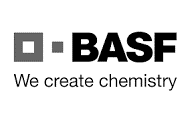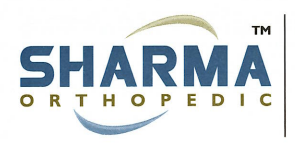- HS Classification Opinions
- 364 Views
After examining the facts concerning the subject item, this office is of the opinion that the device is a composite good consisting of IR and RF functionality. As both the RF and IR control methods are of equal importance and neither would be considered the essential character of the good, the remote control shall be classified according to GRI 3(c). A review of the competing headings finds that the IR control functionality, classified within heading 8543, HTSUS, occurs numerically last in the tariff.
CLA-2-85:OT:RR:NC:N2:208
Chris Constantine
Voxx International
180 Marcus Blvd
Hauppauge, NY 11788
RE: The tariff classification of a remote control from China
Dear Mr. Constantine:
In your letter dated September 09, 2022, you requested a tariff classification ruling.
The merchandise under consideration is identified as the Ultra-Thin Universal Streaming Remote Control, Model Number RCTSB3B. The subject remote is described as an ultra-thin, rechargeable, handheld unit which can remotely control smart televisions and other streaming devices. The remote control can be programmed to control Bluetooth enabled devices via radio frequency (RF) or traditional televisions via infrared (IR) technology. You state that the device is capable of using both technologies simultaneously as up to three devices can be programmed into the remote.
General Rules of Interpretation (GRI) 1, Harmonized Tariff Schedule of the United States (HTSUS), states, in part, that for legal purposes, classification shall be determined according to the terms of the headings, any relative section or chapter notes and, unless otherwise required, according to the remaining GRI’s taken in order. Goods that are, prima facie, classifiable under two or more headings, are classifiable in accordance with GRI 3.
GRI 3(a) states that the heading that provides the most specific description shall be preferred to headings providing a more general description. However, when two or more headings refer to only part of the items in a composite good, those headings are to be regarded as equally specific in relation to the goods, even if one of them gives a more complete or precise description of the good. As such, they are regarded as equally specific and classification of the composite good is to be determined by GRI 3(b) or GRI 3(c) taken in the appropriate order in which they are set out in GRI 3. GRI 3(b) states, in part, that composite goods, which cannot be classified by reference to GRI 3(a), are to be classified as if they consisted of the component that gives them their essential character. GRI 3(c) provides that when goods cannot be classified by reference to GRI 3(a) or 3(b), they are to be classified in the heading that occurs last in numerical order among the competing headings which equally merit consideration. Inasmuch as no essential character can be determined, GRI 3(b) does not apply.
After examining the facts concerning the subject item, this office is of the opinion that the device is a composite good consisting of IR and RF functionality. As both the RF and IR control methods are of equal importance and neither would be considered the essential character of the good, the remote control shall be classified according to GRI 3(c). A review of the competing headings finds that the IR control functionality, classified within heading 8543, HTSUS, occurs numerically last in the tariff.
The applicable subheading for the Ultra-Thin Universal Streaming Remote Control (Remote Control), Model Number RCTSB3B, will be 8543.70.9860, HTSUS, which provides for “Electrical machines and apparatus, having individual functions, not specified or included elsewhere in this chapter; parts thereof: Other machines and apparatus: Other: Other: Other: Other.” The general rate of duty will be 2.6% ad valorem.
Pursuant to U.S. Note 20 to Subchapter III, Chapter 99, HTSUS, products of China classified under subheading 8543.70.9860, HTSUS, unless specifically excluded, are subject to an additional 25 percent ad valorem rate of duty. At the time of importation, you must report the Chapter 99 subheading, i.e., 9903.88.02, in addition to subheading 8543.70.9860, HTSUS, listed above.
The HTSUS is subject to periodic amendment so you should exercise reasonable care in monitoring the status of goods covered by the Note cited above and the applicable Chapter 99 subheading. For background information regarding the trade remedy initiated pursuant to Section 301 of the Trade Act of 1974, including information on exclusions and their effective dates, you may refer to the relevant parts of the USTR and CBP websites, which are available at:
https://ustr.gov/issue-areas/enforcement/section-301-investigations/tariff-actions https://www.cbp.gov/trade/remedies/301-certain-products-china
Duty rates are provided for your convenience and are subject to change. The text of the most recent HTSUS and the accompanying duty rates are provided on the World Wide Web at https://hts.usitc.gov/current.
This ruling is being issued under the provisions of Part 177 of the Customs Regulations (19 C.F.R. 177).
A copy of the ruling or the control number indicated above should be provided with the entry documents filed at the time this merchandise is imported. If you have any questions regarding the ruling, contact National Import Specialist Luke LePage at luke.lepage@cbp.dhs.gov.
Sincerely,
Steven A. Mack
Director
National Commodity Specialist Division








